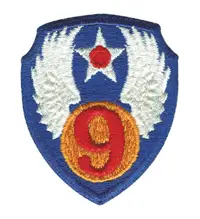ALG A-16 – Brucheville
Battle of Normandy
This page presents the history of ALG (Advanced Landing Groud) A-16, used by the 9th United States Air Force during the Battle of Normandy.

9th United States Air Force
Location: Brucheville, Manche (50)
Code: A-16
Coordinates: 49°22’11 »N – 01°13’00 »W
Construction: from July 6 to August 2, 1944 by the 843rd Engineer Aviation Battalion (EAB)
Operational period: from August 2 to September 5, 1944
Airstrip: Prefabricated Bituminous Surfacing (PBS) extended by compacted earth
PBS airstrip:
Length: 1 097,28 m (3 600 feet)
Width: 36,57 m (120 feet)
Azimuth: 70°
Compacted earth airstrip:
Length: 426,72 m (1 400 feet)
Width: 36,57 m (120 feet)
Azimuth: 70°
Units:
– 36th Fighter Group (22nd Fighter Squadron, 23rd Fighter Squadron, 53rd Fighter Squadron) using P-47 Thunderbolt.
– Detachment of the 10th Photographic Recognition Group using F-5 Lightning
ALG A-16 history:
Sappers build a 3,600-foot long PBS runway (Prefabricated Bituminous Surfacing). PBS, also known as « Hessian Mat », is a solid coating consisting of layers of bitumen and Hessian fabric which is particularly meticulous and requires the use of special machines. It avoids the negative effects of mud and dust.
A total of 426.72 meters (1400 feet) of SMT is added to provide a 1,524-meter (5,000-foot) total runway for heavily loaded ammunition and explosive devices. However, the loose nature of the land causes serious slowdowns and the ALG A-16 is declared operational only on August 2, 1944, more than fifteen days after the date originally planned.
Remains:
– Commemorative stele along the provincial road 424 one kilometer south of Sainte-Marie-du-Mont.
